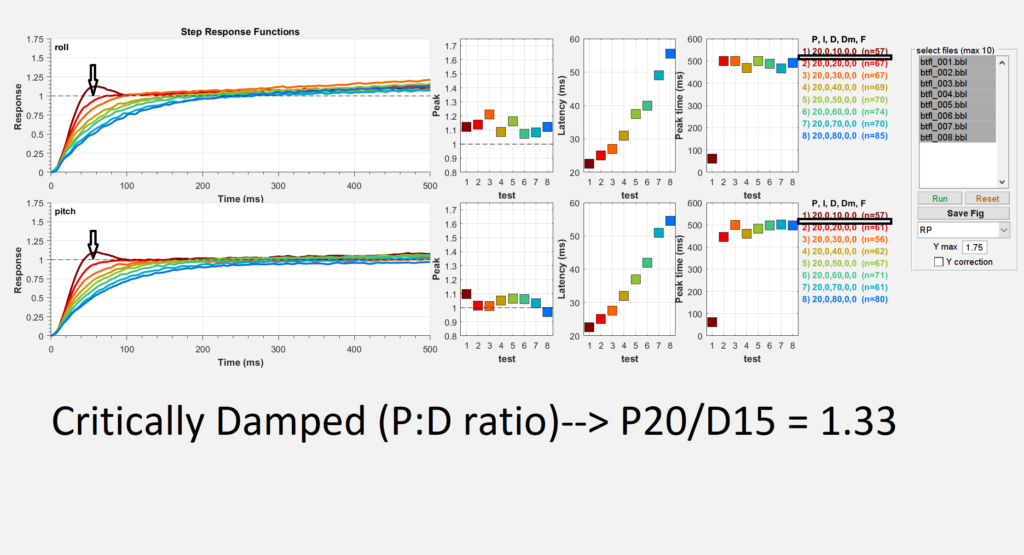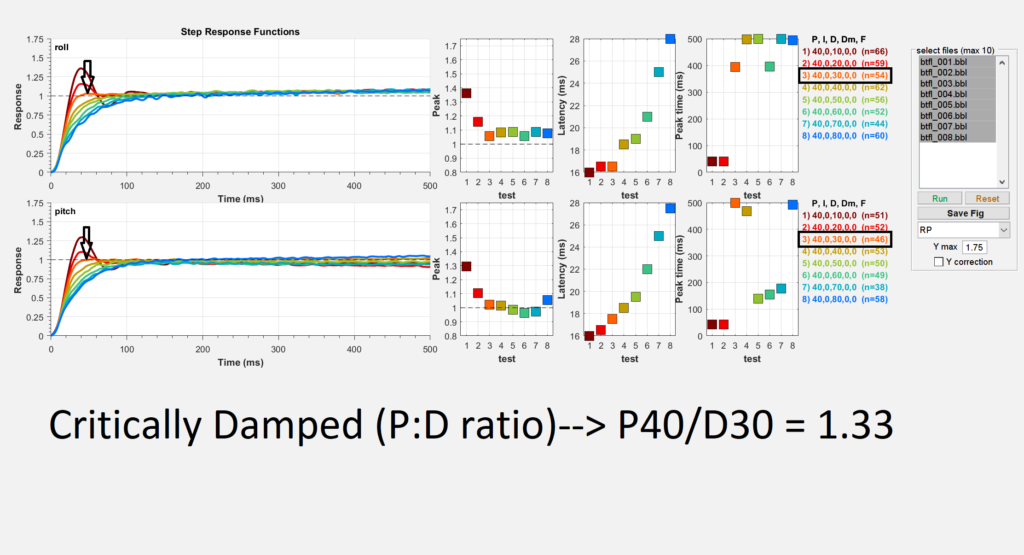



These are some great runs by Tim Heebs on how P:D balance is just a scientific fact, and that when you find your quads P:D balance, you can move the gains up (or down) and the response will remain the same. Then for PEAK FLIGHT PERFORMANCE, you move the gains up to the D-Max, which for this quad seems to be around D60 to D65. I have been saying this for years now and hope this puts some closure as it is not a debate. It’s just a fact of how things work.
1st image: P20 and sweeping D from 10 to 80
2nd image: P40 and sweeping D from 10 to 80
3rd image: P60 and sweeping D from 10 to 80
In all 3 examples, you can see the Critically Damped Stepped Response is P/D = 1.33
4th image: So then Tim takes a fixed P:D ratio of 1.33 and sweeps that from D15 to D75. You can see at just above D60, it starts to get D-term oscillation. So that sets your Max D at, lets say, D60. So with max D60, that sets Pmax = 80. Those two terms are locked. Now you can sweep I-term as well and find the best P:i balance. That is outside this testing data set, but nevertheless: it is D –> P –> I.
For seeing this explained in video format, see below.
Great stuff Tim Heebs. Also to @Brian White who did the same tests on a whoop and got the same results; be it with a different P:D ratio (1.0 in that case).
The Betaflight 4.1, 4.2 and 4.3 sliders help not worry about all the maths, just slide stuff around, and after I add the ability to adjust sliders through In-flight Adjustments, it will just be … amazing. No more landing to adjust. Just put on a potentiometer.
4.3 sliders for the potentiometer:
A. Master (PiDFF)
B. Tracking (Pi slider)
C. Drift-Wobble (i slider)
—- and maybe —
D. Stick Response (FF slider)